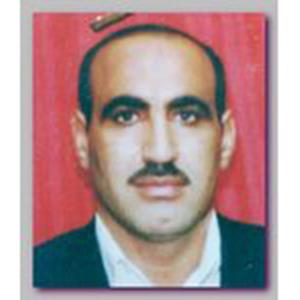On February 26, reports surfaced indicating that Abu Kayrh al-Masri had been killed in a U.S. airstrike in Idlib, Syria. Outside of Ayman al-Zawahiri, al-Masri was one of the most important legacy leaders left from the core al-Qaeda group. Al-Masri was considered al-Zawahiri’s top deputy; it was in al-Masri’s house in Afghanistan that Khalid Shaykh Mohammed briefed top al-Qaeda leaders about plans for the 9/11 attacks. Al-Masri’s death in Syria shows both the longevity of senior al-Qaeda leaders, as well as Syria’s importance to the group.
The number two figure in al-Qaeda, Abu Karyh al-Masri, was reportedly killed in a drone strike in Idlib, Syria, on February 26. Married to one of Usama bin-Ladin’s daughters and a close associate of Ayman al-Zawahiri, al-Masri was one of the most prominent remaining pre-9/11 figures in al-Qaeda, like reported by soufangroup.com. His death highlights both how long the arc of many senior al-Qaeda figures can run, as well as the importance of Syria to the terror group. Al-Masri’s significance in terms of his direct connection to the core of al-Qaeda and to some of its more infamous attacks is difficult to overstate.
It was in al-Masri’s guesthouse in Kabul, Afghanistan, that Khalid Shaykh al-Mohammad briefed the top leaders of al-Qaeda about the planning of the September 11, 2001 attacks. Originally from Egypt and a member of the Egyptian Islamic Jihad, al-Masri was a long-time associate to current al-Qaeda leader Ayman al-Zawahiri and had been a trusted adviser to Usama bin Ladin. He was a member of the al-Qaeda Shura council and their main liaison to the Taliban before the U.S. invasion. He fought in the Balkans in the 1990s as part of the effort to turn the conflict into a catalyst for international jihad, and was wanted by the U.S. for his direct involvement in the 1998 East African embassy bombings.
After the September 11 attacks, al-Masri fled Afghanistan and went to Iran. Along with one of bin-Ladin’s sons and Sayf al-Adl—another top member of al-Qaeda— al-Masri was effectively placed on house arrest while in Iran. This arrangement was reflective of al-Qaeda and Iran’s long and complicated relationship, in which Tehran has essentially sheltered terrorists such as al-Adl and al-Masri, but limited their movements and activities. While the exact date is publicly uncertain, by late 2015 Iran had released al-Masri (along with al-Adl and others) in exchange for an Iranian diplomat held hostage by al-Qaeda in the Arabian Peninsula (AQAP). In July 2016, a Syrian al-Qaeda media outlet released an audio recording of al-Masri, showing that when he left Iran he went to Syria—the new frontline of jihad—rather than the tribal areas of Pakistan where other members of al-Qaeda’s central leadership are believed to be hiding.
Al-Masri’s death is another loss for the core al-Qaeda that existed before 2001, and that continues to play a significant role in the group. Several legacy al-Qaeda figures have been able to evade efforts to capture or kill them by the U.S. and others despite intense efforts for more than 15 years; their influence on the group in terms of motivation, symbolism, and operational planning is enormous. Al-Masri served as a direct link between the al-Qaeda that executed the 1998 East African embassy bombings and the 9/11 attacks, to the group that is still determined to attack the West and turn Syria into its new base of operations.



